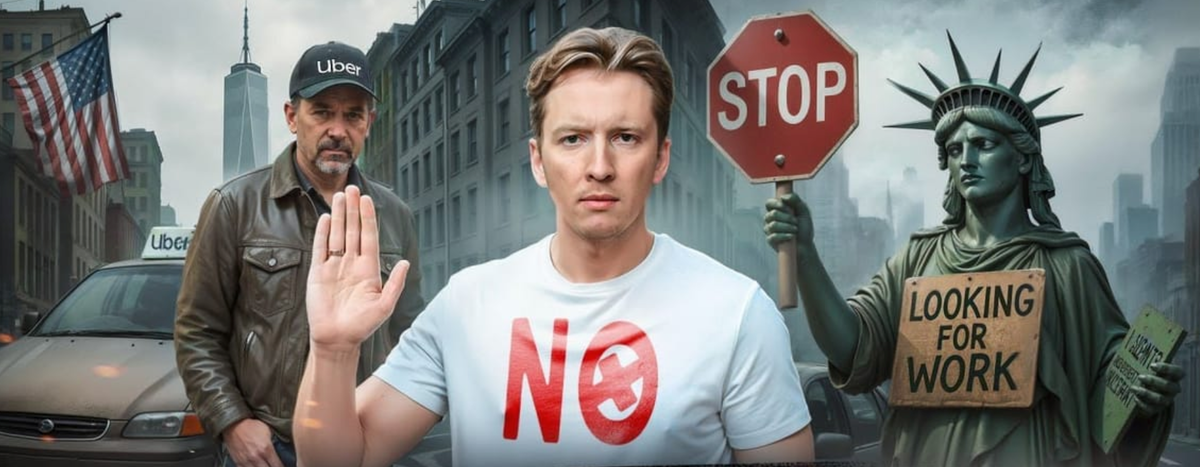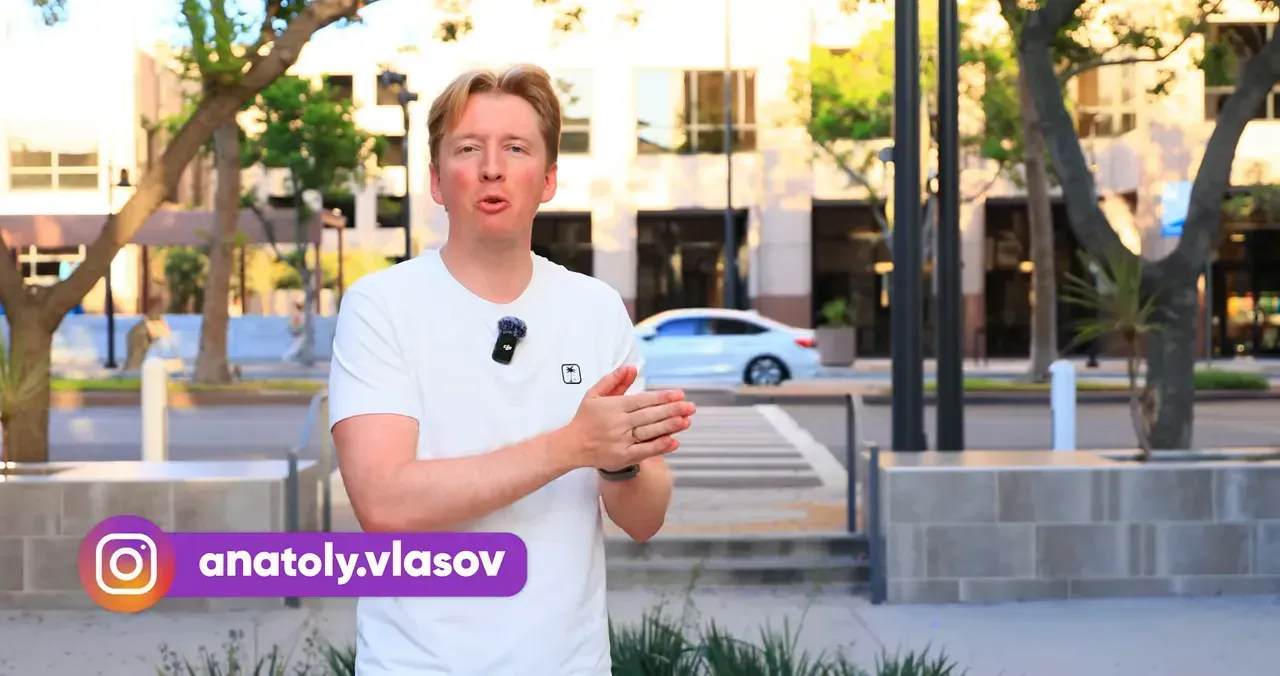Anatoly Vlasov - The Truth About Life in the U.S. After 9 Years of Immigration

In this piece, I had a virtual conversation with Anatoly Vlasov — through his video on the “Capital of the World” channel. He spoke honestly about who the U.S. is not suited for, what challenges newcomers face, and which real solutions actually work. This is a conversation everyone planning to move — or just starting their journey in America — needs to hear.

Why did you record an updated interview after nearly nine years in the U.S.?
Over the years, my perception of the country has changed dramatically. I released a similar video more than four years ago, but since then a lot has happened — divorce, dealing with the legal system and police, and, most importantly, new immigration waves after 2022. Life in emigration turned out to be far more complex than many imagine, so I decided to share my updated perspective and warn those who still hold romantic expectations about the U.S.
How big was the recent immigration wave — and why does it matter?
According to various estimates, between 3.9 and nearly 10 million people arrived in the U.S. between 2022 and 2024. Even the lower estimate represents a massive influx. Most headed to major cities like New York, Los Angeles, Miami, and Chicago — increasing competition in job markets and pushing up rents and basic living costs. For many newcomers, settling down has become significantly harder than before.
Why do many newcomers expect to “make it” within six months — and how does that end?
A common mistake is expecting a quick financial or social breakthrough: “I succeeded in Moscow or a big city, so I’ll succeed here too.” People assume earning $50–60K with a family means they’ll be “living like a millionaire” within half a year. In reality, about 60% of immigrants end up in low-paid, non-professional jobs (cleaning, driving, delivery, warehouse work). These jobs offer no stability or career growth but come with high living expenses in major cities.
How expensive is life in large U.S. cities?
Here’s a real example: in Los Angeles, the bare minimum for one person to survive is about $3,900/month. For families with children and daycare, expenses rise quickly. With a low income, you get stuck in the “first immigrant jobs” cycle and can’t afford to quit due to constant bills.
What financial and statistical risks should be considered?
There are worrying facts: about 60% of immigrants spend more than they earn during their first two years — falling into debt and damaging their credit history. Nearly half of Americans themselves don’t have $500–1000 in cash for emergencies. Even after ten years, most immigrants still rent their homes rather than owning them.
Where can immigrants actually succeed — career or business?
From my observation, there are only two reliable paths to a stable life: building a career or starting a business. Everything else leads to constant stress and instability.
Career success requires English proficiency and in-demand skills — in fields like IT, medicine, banking, or skilled trades (electrician, plumber).
Example: a friend of mine started as a courier, studied finance, and trained within a bank — eventually becoming an investment banker managing large portfolios. It took him more than ten years.
Should you come just to earn money from Uber or delivery?
If your plan is “come, work in Uber or delivery, and figure it out later,” chances are you’ll stay stuck there. Such jobs are unstable and rarely lead to homeownership or financial growth. Highly skilled professionals (IT, doctors, scientists) are usually much more stable and satisfied.
Who shouldn’t move to the U.S. right now?
I wouldn’t recommend coming if you:
- Expect an easy start without language or skills.
- Chase brands or “Instagram lifestyle.”
- Plan to come for quick cash and retire back home.
- Apply for asylum without understanding the risks — court delays and hearings can drag on for years.
What psychological risks do immigrants face?
There’s a well-documented clinical condition known as “Ulysses syndrome” (immigrant depression) — chronic anxiety, insomnia, isolation, loss of purpose, and psychosomatic pain without a physical cause.
Statistics show that 1 in 4 immigrants in the U.S. develops clinical depression, and those who emigrate after age 30 have an elevated suicide risk.
Nearly 70% of affected immigrants never return home — due to shame, fear of being seen as a failure, or family expectations.
What about those who entered via Mexico and applied for asylum?
Many of our compatriots did that and are now waiting years for hearings — in some cases postponed to 2032–2033. During this time, they can’t freely travel abroad, deepening anxiety and depression.
How is the quality and price of U.S. services — cafes, healthcare, etc.?
When it comes to complex medical cases, the U.S. truly stands out — people come here for advanced treatments that save lives.
But for routine tests, consultations, or appointments, it’s more expensive and slower than in most major cities abroad. If you’re used to quick and affordable access (like in Moscow), you’ll find many U.S. services costlier and less convenient.
Unless you earn over $20,000/month, don’t expect premium-level service in everyday life.
Why do you call the U.S. a “country of hyper-responsibility”?
Because laws here work. Any mistake brings consequences. If you’re not integrated — no language, no network — even a small contract breach (like rent) or tax error can hit hard. No one will “help through connections.”
I had to experience this through a difficult divorce: at one point, my contact with my kids was restricted, and I had to pay huge legal fees to prove my case. Painful, yes — but it made me respect how powerful and structured the legal system is, even when it feels harsh.
Is there still room for optimism? Why do you want your kids to grow up in the U.S.?
Yes. Despite the difficulties, the U.S. remains an amazing country — the largest economy, a comfortable business environment, and immense opportunities. But there are conditions:
- English is key.
- Integration matters.
- You need a clear career or business plan.
- Constant learning and skill development are non-negotiable.
I came here at 23 and was able to rebuild my life — that gave me an advantage. But it’s not a path for those who rely on “luck.”
What practical advice would you give to those planning to move?
- Have a clear plan — why you’re coming and how you’ll earn long term.
- Learn English beforehand and continue studying here.
- Build a career or business, not just survive through entry-level jobs.
- If you have a stable business back home — keep it; move flexibly without burning bridges.
- Prepare psychologically: know the risks (Ulysses syndrome) and have a support plan — therapy, community, connections.
What would you say to those still undecided?
Be realistic about your resources.
If you live comfortably and grow professionally at home — maybe don’t rush.
But if you have clear goals, valuable skills, willingness to learn English, and a 5–10-year plan — the U.S. can be a place for growth.
Just don’t come chasing an Instagram dream — it rarely leads to happiness and often ends in disappointment.
How did you personally handle this journey — and what would you change?
I took risks and learned constantly. In the early years, my partner and I launched a failed project and went into debt. I had to build multiple income sources — YouTube, visa consulting, and more. It was hard but brought experience and stability.
If I could go back, I’d start learning English earlier and pay more attention to balancing work and family.